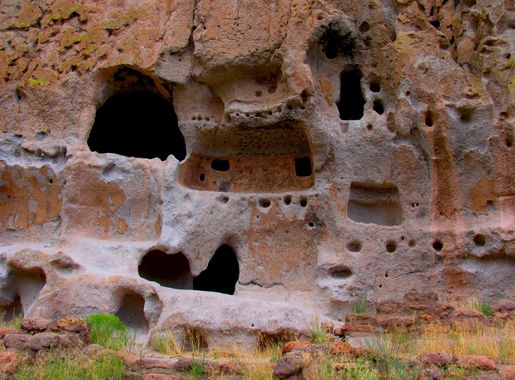
Santa Fe National Forest: A Wilderness Gem in New Mexico
Explore the diverse landscapes, rich cultural history, and outdoor adventures of Santa Fe National Forest in New Mexico—an ideal destination for nature lovers and history enthusiasts alike.
Santa Fe National Forest is a stunning natural treasure located in the heart of New Mexico. Spanning over 1.6 million acres, it offers a diverse range of landscapes from lush forests and alpine meadows to rugged mountains and serene rivers. The forest is an outdoor enthusiast's paradise, providing endless opportunities for hiking, camping, fishing, and wildlife viewing. One of the highlights of Santa Fe National Forest is the Wheeler Peak Wilderness, home to the highest point in New Mexico. Here, adventurous hikers can take on challenging trails that lead to breathtaking panoramic views. For a more leisurely experience, the forest also features numerous scenic drives, including the picturesque High Road to Taos, which offers a journey through charming villages and historical sites. In addition to its natural beauty, Santa Fe National Forest is steeped in rich cultural history. The area is dotted with ancient Native American ruins, petroglyphs, and historic Spanish missions. Visitors can explore these cultural landmarks while enjoying the peaceful surroundings of the forest. Whether you are seeking adventure, tranquility, or a glimpse into the past, Santa Fe National Forest is a must-visit destination.
Local tips in Santa Fe National Forest
- Visit during the fall for stunning foliage and cooler temperatures.
- Check for any forest closures or fire restrictions before your trip.
- Bring plenty of water and sun protection, as the high altitude can be dehydrating.
- Explore the local villages along the High Road to Taos for unique cultural experiences.
- Consider a guided tour to learn about the area's ancient ruins and history.
Santa Fe National Forest: A Wilderness Gem in New Mexico
Santa Fe National Forest is a stunning natural treasure located in the heart of New Mexico. Spanning over 1.6 million acres, it offers a diverse range of landscapes from lush forests and alpine meadows to rugged mountains and serene rivers. The forest is an outdoor enthusiast's paradise, providing endless opportunities for hiking, camping, fishing, and wildlife viewing. One of the highlights of Santa Fe National Forest is the Wheeler Peak Wilderness, home to the highest point in New Mexico. Here, adventurous hikers can take on challenging trails that lead to breathtaking panoramic views. For a more leisurely experience, the forest also features numerous scenic drives, including the picturesque High Road to Taos, which offers a journey through charming villages and historical sites. In addition to its natural beauty, Santa Fe National Forest is steeped in rich cultural history. The area is dotted with ancient Native American ruins, petroglyphs, and historic Spanish missions. Visitors can explore these cultural landmarks while enjoying the peaceful surroundings of the forest. Whether you are seeking adventure, tranquility, or a glimpse into the past, Santa Fe National Forest is a must-visit destination.
When is the best time to go to Santa Fe National Forest?
Iconic landmarks you can’t miss
Santa Fe Plaza
Explore the vibrant Santa Fe Plaza, a historical landmark filled with art, culture, and delicious local cuisine in the heart of New Mexico.

Pecos National Historical Park
Explore the ancient ruins and scenic trails of Pecos National Historical Park, a captivating blend of history and nature in New Mexico.
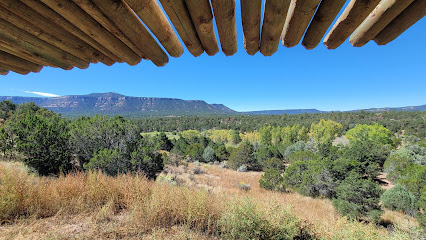
El Rancho de las Golondrinas
Experience the rich cultural heritage of New Mexico at El Rancho de las Golondrinas, a living history museum showcasing authentic adobe architecture and vibrant reenactments.
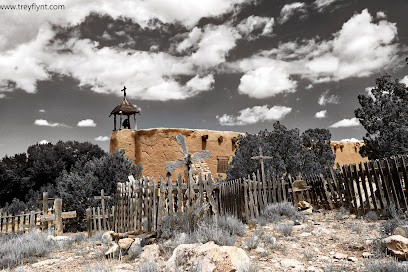
Cross of the Martyrs
Discover the Cross of the Martyrs in Santa Fe, a historic park offering stunning views and a serene atmosphere, perfect for nature lovers and history enthusiasts alike.
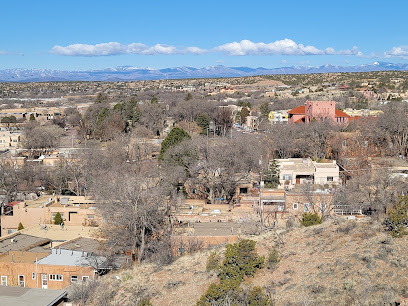
Hyde Memorial State Park
Explore Hyde Memorial State Park, a scenic state park in New Mexico, perfect for hiking, picnicking, and enjoying nature's tranquility.

Santa Fe Railyard Park
Explore Santa Fe Railyard Park, an artistic urban oasis blending nature, culture, and community events in the heart of New Mexico's capital.
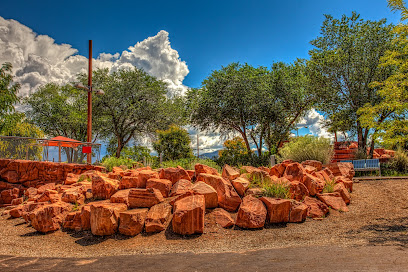
Jemez Historic Site
Explore the Jemez Historic Site, where the rich history of Native American culture and Spanish colonization come together in scenic New Mexico.
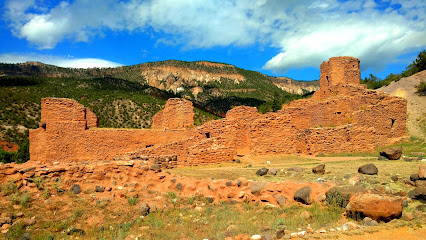
Dale Ball Trails
Discover the breathtaking trails of Dale Ball in Santa Fe, NM, where nature's beauty awaits at every turn.
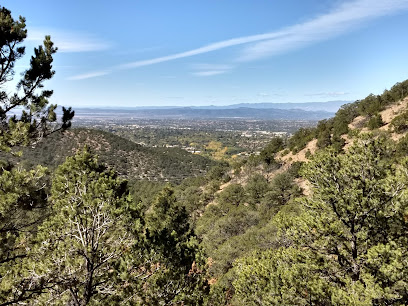
Vista Grande Overlook Observation Site
Discover stunning vistas and historical significance at Vista Grande Overlook in Santa Fe, the perfect blend of nature and history.
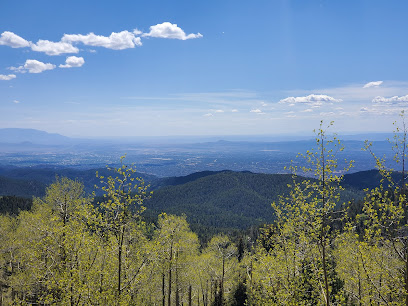
Aspen Vista Picnic Ground
Discover the tranquil beauty of Aspen Vista Picnic Ground, a picturesque picnic spot in Santa Fe surrounded by stunning aspen trees and scenic hiking trails.
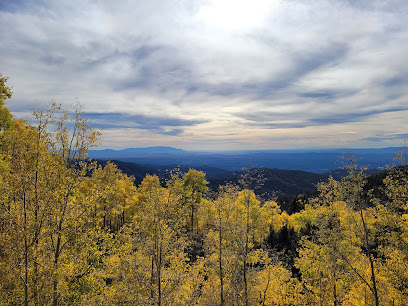
Oldest House Museum
Experience the rich history of Santa Fe at the Oldest House Museum, the oldest house in the USA, showcasing cultural heritage and fascinating exhibits.
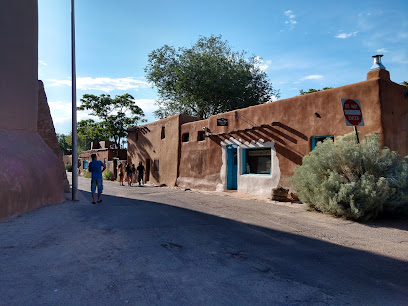
IAIA Museum of Contemporary Native Arts (MoCNA)
Explore contemporary Native American art at the IAIA Museum in Santa Fe—a cultural beacon showcasing innovation and tradition.
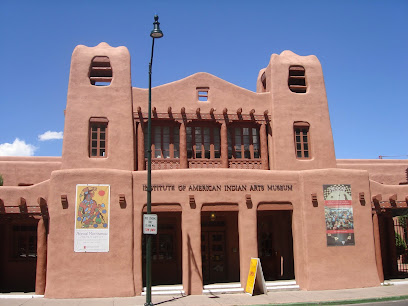
La Cieneguilla Petroglyphs
Discover the ancient artistry of La Cieneguilla Petroglyphs in Santa Fe, NM—where history and breathtaking landscapes meet.
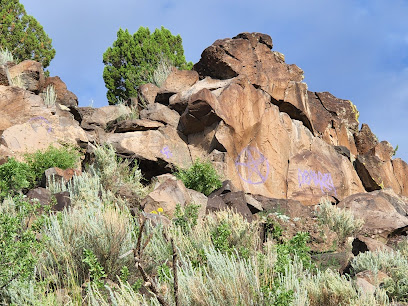
Diablo Canyon Recreation Area
Explore the stunning landscapes and rich geology of Diablo Canyon Recreation Area, a must-visit natural wonder in Santa Fe, New Mexico.
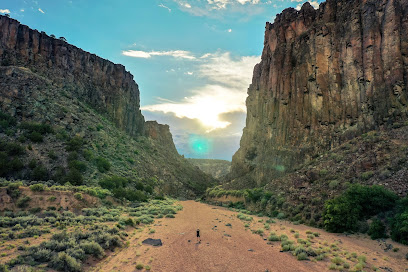
New Mexico History Museum
Explore New Mexico's vibrant history through engaging exhibits, artifacts, and cultural experiences at the New Mexico History Museum in Santa Fe.
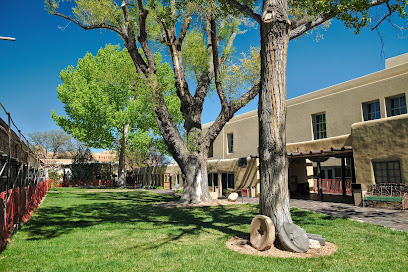
Unmissable attractions to see
White Sands National Park
Experience the otherworldly beauty of White Sands National Park, where shimmering gypsum dunes meet a vibrant desert ecosystem.
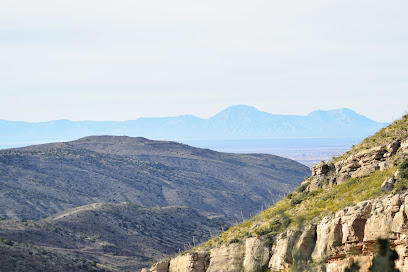
Carlsbad Caverns National Park
Discover the stunning underground world of Carlsbad Caverns National Park, a UNESCO World Heritage Site rich in geological wonders and wildlife.
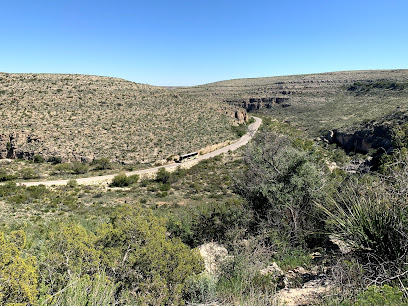
Santa Fe Plaza
Discover the vibrant history and culture of Santa Fe Plaza, a charming landmark filled with art, local cuisine, and community spirit in New Mexico.
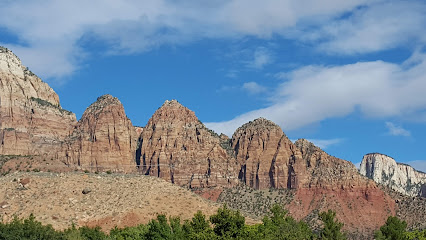
Cibola National Forest
Discover the breathtaking beauty of Cibola National Forest in New Mexico, a paradise for outdoor enthusiasts and nature lovers.
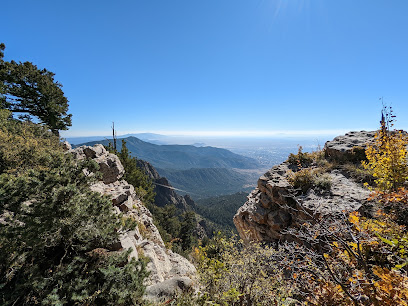
Santuario de Chimayo
Experience the profound spirituality and historic charm of Santuario de Chimayo, a revered pilgrimage site nestled in the scenic landscapes of New Mexico.
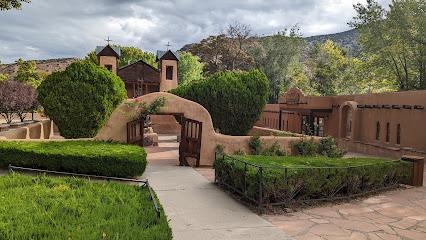
Bottomless Lakes State Park
Explore the enchanting Bottomless Lakes State Park in Roswell, NM, with its stunning blue lakes, rich wildlife, and endless outdoor activities for nature lovers.
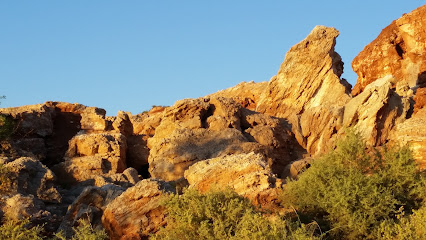
International UFO Museum and Research Center and Gift Shop
Discover the intriguing world of UFOs and extraterrestrial life at the International UFO Museum and Research Center in Roswell, NM.
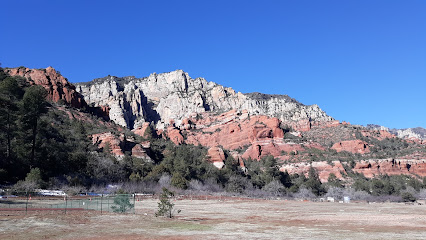
Rio Grande Nature Center State Park
Explore the serene landscapes and diverse wildlife at Rio Grande Nature Center State Park, a perfect retreat in Albuquerque's natural beauty.
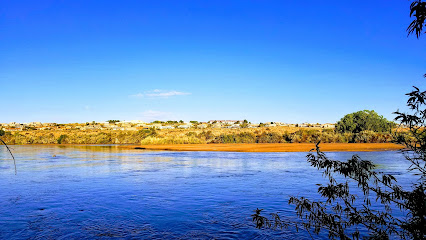
Tinkertown Museum
Explore the enchanting Tinkertown Museum in Sandia Park, NM, showcasing whimsical folk art and miniature wonders that delight all ages.
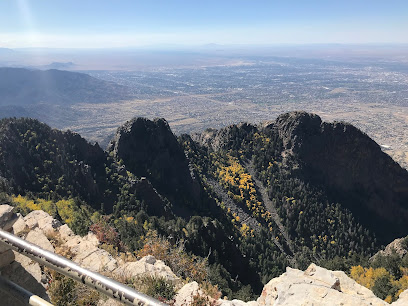
El Rancho de las Golondrinas
Discover the living history of New Mexico at El Rancho de las Golondrinas, where culture, tradition, and stunning landscapes come together.
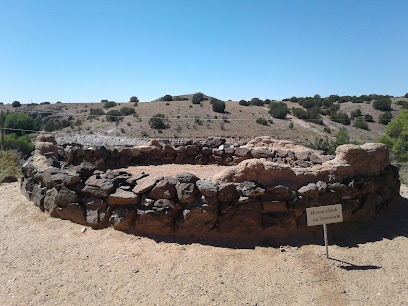
Santa Rosa Lake State Park
Experience the beauty of Santa Rosa Lake State Park, a premier destination for fishing, hiking, and enjoying nature in New Mexico.
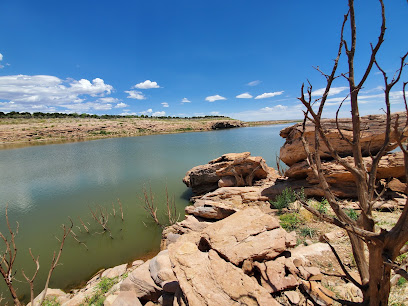
Cross of the Martyrs
Discover the serene beauty and rich history at Santa Fe's Cross of the Martyrs, offering stunning views and a peaceful retreat.
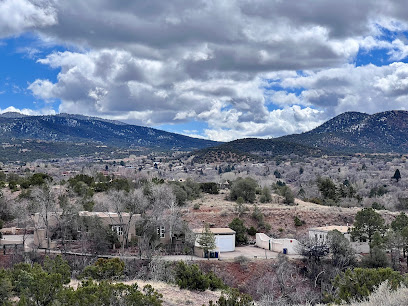
Roswell UFO Spacewalk
Uncover the secrets of the universe at Roswell UFO Spacewalk, an artful planetarium experience dedicated to UFOs and extraterrestrial mysteries.

New Mexico Museum of Art on the Plaza
Explore the stunning New Mexico Museum of Art in Santa Fe, showcasing Southwestern masterpieces and contemporary exhibitions in a beautiful historic setting.

Santa Rosa Blue Hole
Experience the stunning beauty of Santa Rosa Blue Hole, a natural swimming oasis surrounded by picturesque landscapes in New Mexico.
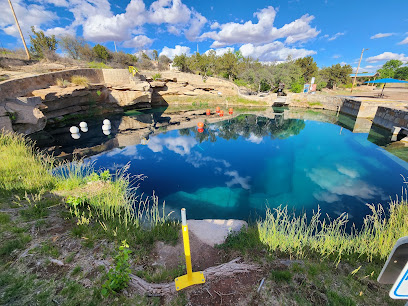
Essential places to dine
La Choza Restaurant
Experience authentic Mexican flavors at La Choza Restaurant in Santa Fe – where vibrant cuisine meets warm hospitality.
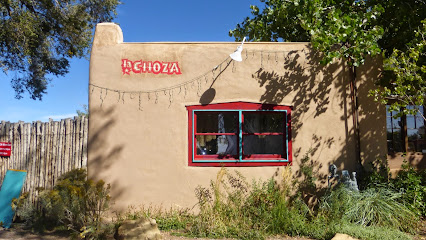
Cowgirl
Experience the lively spirit of Santa Fe at Cowgirl - where American barbecue meets modern culinary creativity.
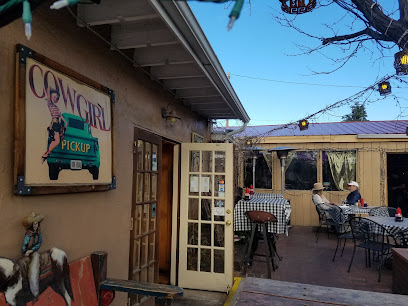
The Ranch House
Experience authentic American cuisine at The Ranch House in Santa Fe - where local flavors meet exceptional hospitality.
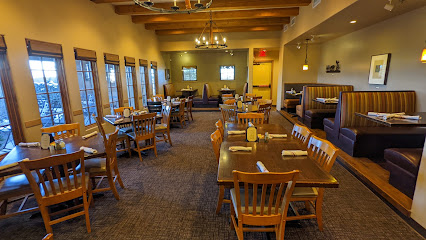
Maria's New Mexican Kitchen
Savor the authentic tastes of New Mexico at Maria's New Mexican Kitchen in Santa Fe - where every dish tells a story.

The Shed
Discover authentic New Mexican flavors at The Shed in Santa Fe - where tradition meets taste in every delicious dish.
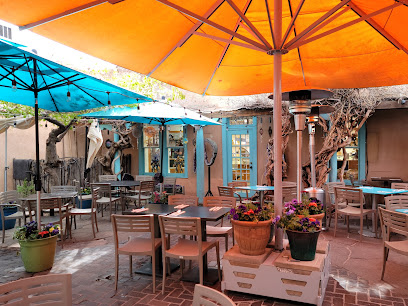
Coyote Cafe & Rooftop Cantina
Experience vibrant Southwestern cuisine and stunning rooftop views at Coyote Cafe & Rooftop Cantina in Santa Fe.
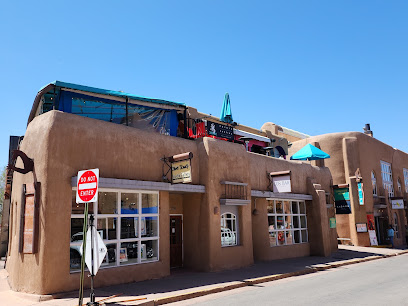
Cafe Pasqual's
Experience the vibrant flavors of Southwestern American cuisine at Cafe Pasqual's in Santa Fe – where every dish tells a story.
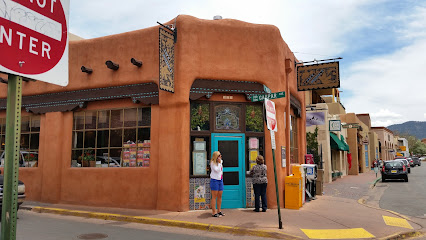
Clafoutis
Experience the rich flavors of France at Clafoutis in Santa Fe - a delightful bakery and breakfast spot serving artisanal treats.
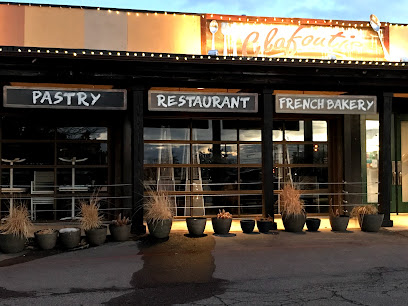
Jambo Cafe
Discover the vibrant fusion of African and Caribbean cuisine at Jambo Cafe in Santa Fe, where every bite tells a story.
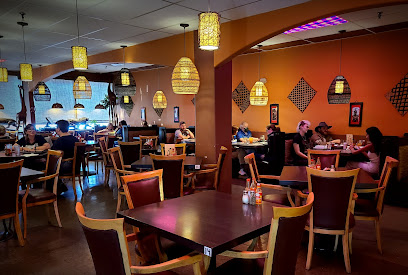
La Plazuela At La Fonda
Experience exquisite fusion cuisine in a historic setting at La Plazuela in Santa Fe - where tradition meets modern culinary artistry.
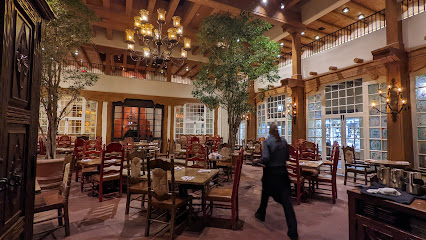
Paper Dosa
Savor authentic Indian cuisine at Paper Dosa in Santa Fe—where tradition meets modernity in every flavorful bite.
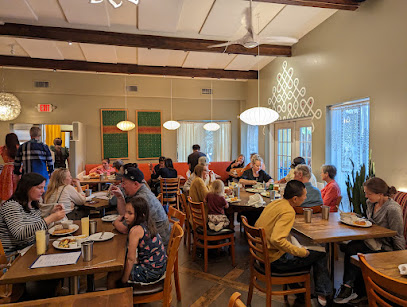
Geronimo
Experience exquisite New American cuisine in an elegant setting at Geronimo in Santa Fe, where every dish tells a story of local flavors.
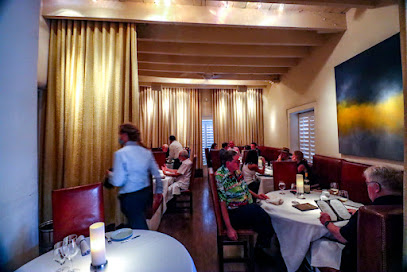
Atrisco Cafe & Bar
Experience authentic New Mexican flavors at Atrisco Cafe & Bar in Santa Fe - a delightful culinary journey awaits every visitor.
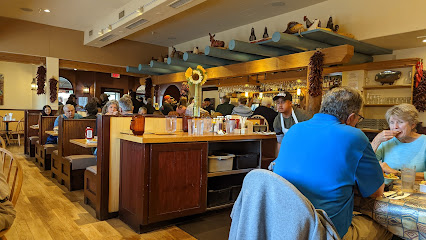
French Pastry Shop & Restaurant
Experience authentic French cuisine at The French Pastry Shop & Restaurant in Santa Fe - your destination for delightful pastries and savory dishes.
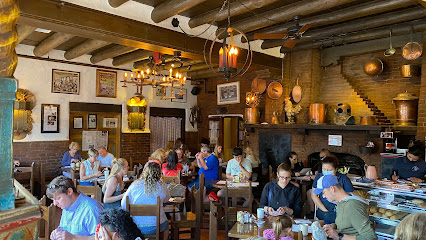
Dinner For Two
Discover Dinner For Two in Santa Fe: where exquisite steaks meet innovative seafood and authentic Mexican flavors in an elegant dining experience.

Markets, malls and hidden boutiques
Santa Fe Place Mall
Explore Santa Fe Place Mall, a vibrant shopping hub in New Mexico offering diverse stores, dining, and entertainment for an unforgettable retail experience.
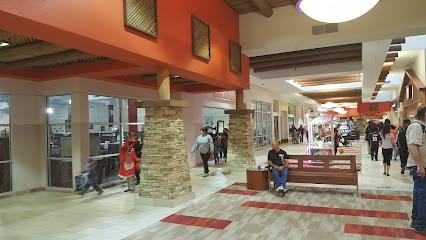
Tin-Nee-Ann Trading Co
Explore authentic Native American treasures and unique gifts at Tin-Nee-Ann Trading Co in Santa Fe, NM.
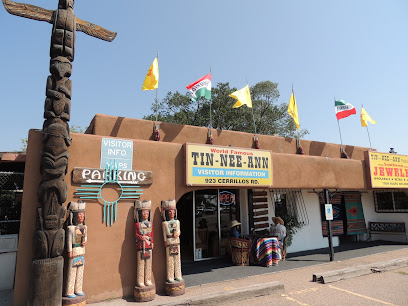
Doodlet's
Discover Doodlet's, a unique gift shop in Santa Fe offering handcrafted treasures and local art that captures the spirit of New Mexico.

Jackalope Mercado at Santa Fe
Explore Jackalope Mercado in Santa Fe for unique pottery, handcrafted furniture, and a true taste of New Mexico's vibrant culture.
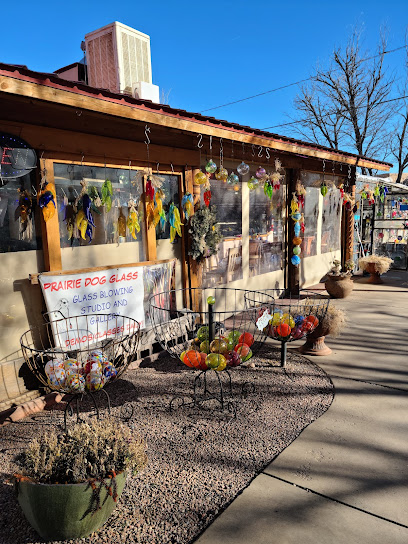
KESHi the zuni connection
Explore KESHi, a unique gift shop and art gallery in Santa Fe, showcasing exquisite Zuni jewelry, art, and cultural treasures.
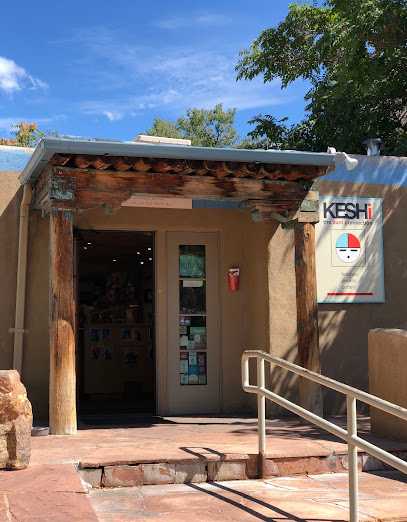
The Shop A Christmas Store
Discover the magical charm of The Shop A Christmas Store in Santa Fe, offering festive decorations, unique gifts, and an enchanting holiday spirit year-round.

Wind River Trading Company
Explore Wind River Trading Company in Santa Fe for exquisite handmade jewelry and authentic Southwestern crafts that capture the essence of New Mexico.
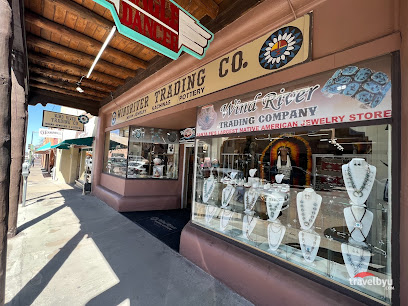
Original Trading Post
Explore the Original Trading Post for authentic Native American goods and unique souvenirs in the heart of Santa Fe, New Mexico.
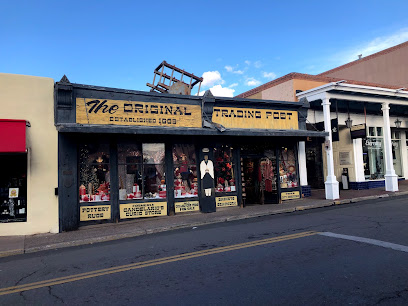
El Nicho
Discover unique gifts and local artistry at El Nicho, a charming gift shop in the heart of Santa Fe, New Mexico.
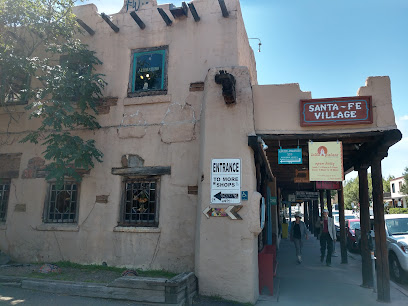
Yippee Yi Yo
Discover unique gifts and local artistry at Yippee Yi Yo, Santa Fe's enchanting gift shop showcasing the vibrant culture of New Mexico.
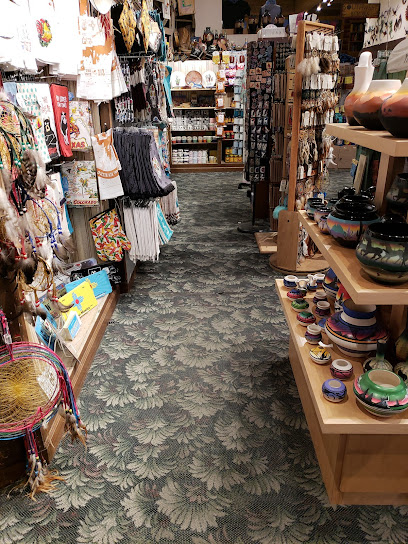
Sunwest on the Plaza
Explore the charm of Sunwest on the Plaza, a unique gift shop in Santa Fe offering authentic Native American pottery and crafts.

Sun Country Traders
Explore the rich tapestry of Native American culture through authentic crafts and art at Sun Country Traders in Santa Fe.
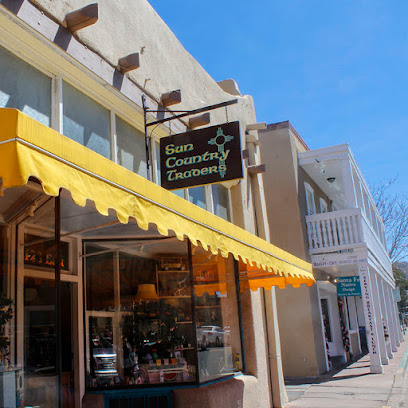
Nathalie Home
Discover unique clothing styles at Nathalie Home in Santa Fe, where local artistry meets contemporary fashion for all ages.
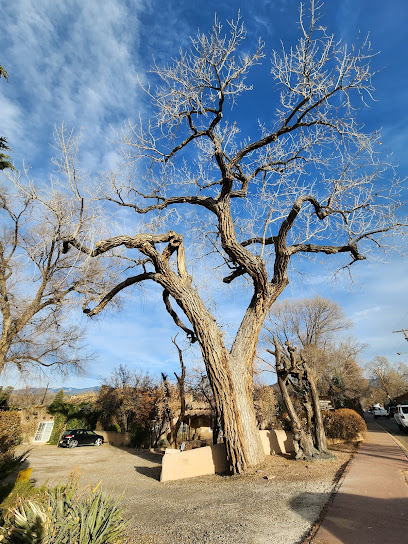
Santa Fe VINTAGE OUTPOST
Explore the charm of Santa Fe Vintage Outpost, where unique fashion meets rich history in a delightful vintage clothing experience.
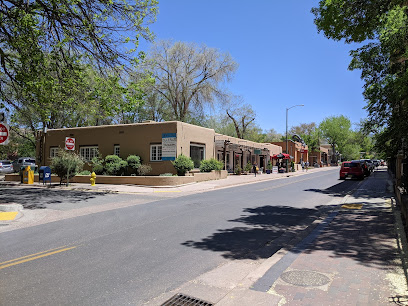
Curiosa
Explore Curiosa in Santa Fe: A unique gift shop showcasing local artistry and handmade treasures, perfect for memorable souvenirs.
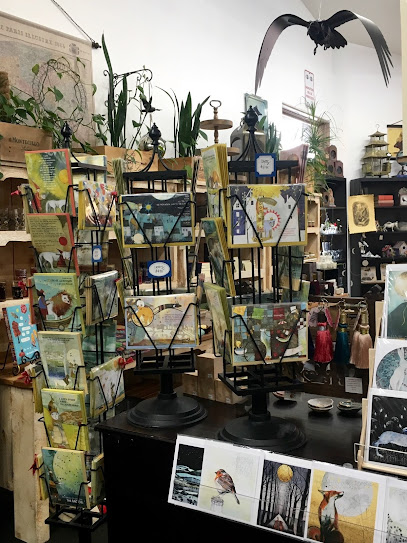
Essential bars & hidden hideouts
Cowgirl
Discover the vibrant flavors and lively ambiance of Cowgirl, a must-visit bar and restaurant in Santa Fe, New Mexico.
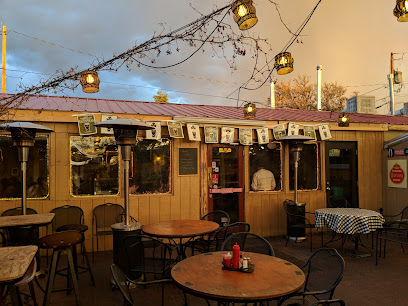
Del Charro
Experience the vibrant flavors of Del Charro in Santa Fe, offering delicious American cuisine, craft beers, and a lively atmosphere perfect for any occasion.
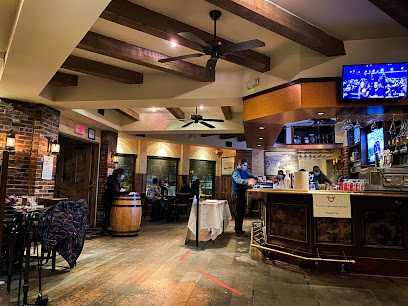
Coyote Cafe & Rooftop Cantina
Experience the vibrant flavors of Southwestern cuisine at Coyote Cafe & Rooftop Cantina in Santa Fe, New Mexico, where every meal is a celebration.
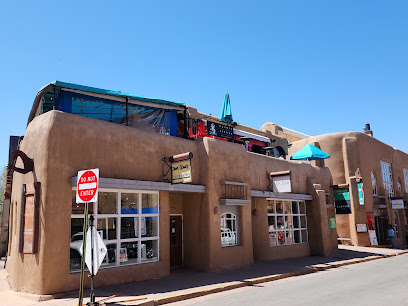
Horseman's Haven Cafe
Discover authentic Mexican cuisine at Horseman's Haven Cafe in Santa Fe, where tradition meets flavor in a welcoming atmosphere.
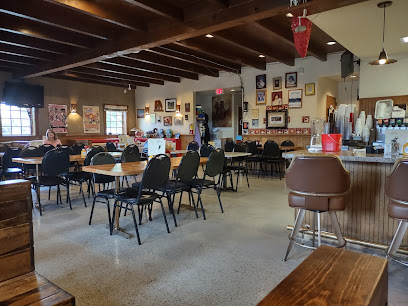
La Plazuela At La Fonda
Explore the vibrant flavors of Santa Fe at La Plazuela, where Mexican tradition meets fusion cuisine in a historic setting.
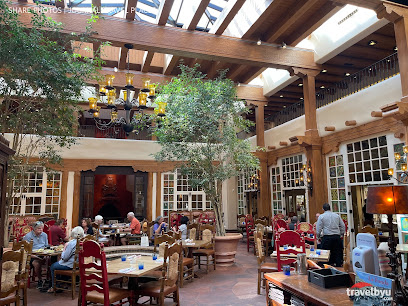
Thunderbird Bar & Grill
Experience the vibrant flavors of Santa Fe at Thunderbird Bar & Grill, where local ingredients meet a lively atmosphere.
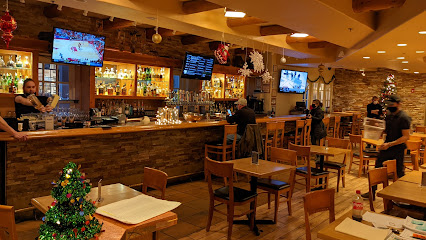
French Pastry Shop & Restaurant
Discover a slice of France in Santa Fe at the French Pastry Shop & Restaurant, where delightful pastries and savory dishes create an unforgettable dining experience.
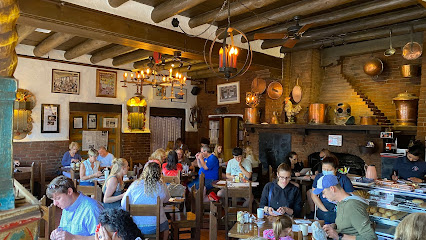
Cross of the Martyrs
Experience the rich history and breathtaking views at the Cross of the Martyrs in Santa Fe, a serene park honoring the Franciscan martyrs with stunning landscapes.
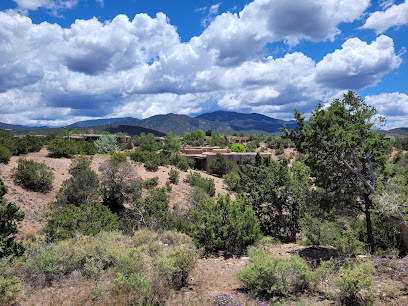
El Farol
Experience the vibrant atmosphere of El Farol in Santa Fe, where exquisite tapas meet live music for an unforgettable culinary journey.
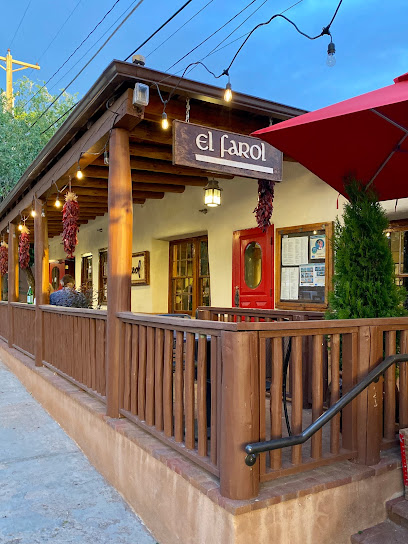
Izanami Restaurant
Experience authentic Japanese cuisine in Santa Fe at Izanami Restaurant, where tradition meets modern flair for a dining experience like no other.
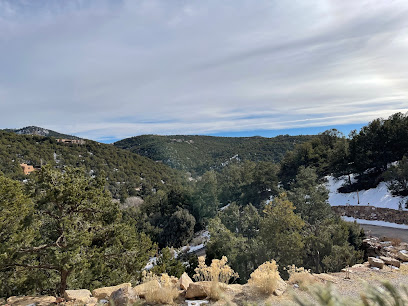
The Matador
Discover The Matador in Santa Fe, NM - a lively bar known for its craft cocktails, vibrant atmosphere, and live music, perfect for unwinding after exploring the city.
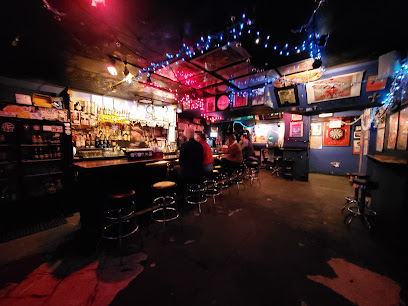
The Brakeroom - Santa Fe Brewing
Discover the vibrant craft beer scene at The Brakeroom in Santa Fe, where local flavors and a welcoming atmosphere await every visitor.
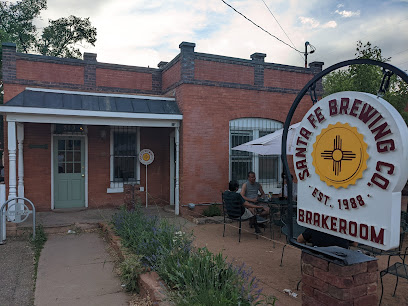
Dale Ball Trails
Discover the natural wonders of Dale Ball Trails in Santa Fe, NM, with over 22 miles of breathtaking hiking paths through stunning landscapes.
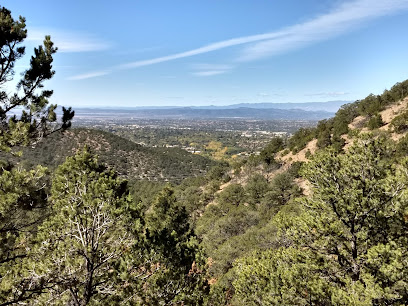
Tiny's
Experience the vibrant flavors of Southwestern American cuisine at Tiny's, a must-visit culinary destination in Santa Fe, New Mexico.
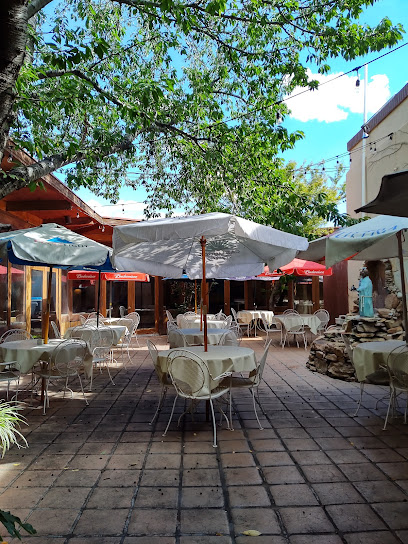
Evangelo's
Discover Evangelo's Cocktail Lounge in Santa Fe, NM, where vibrant cocktails and a lively atmosphere await you.
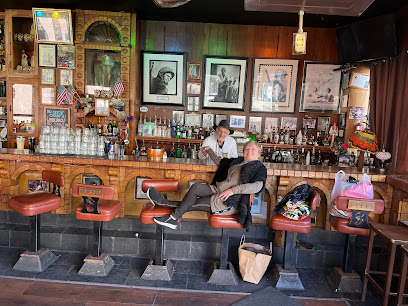
Local Phrases about Santa Fe National Forest
-
- HelloHola
[oh-lah] - GoodbyeAdiós
[ah-dee-ohs] - YesSí
[see] - NoNo
[noh] - Please/You're welcomePor favor/De nada
[por fah-vor/de nah-dah] - Thank youGracias
[grah-syahs] - Excuse me/SorryDisculpe/Perdón
[dee-skool-peh/pehr-dohn] - How are you?¿Cómo estás?
[koh-moh ehs-tahs] - Fine. And you?Bien. ¿Y tú?
[byen. ee too] - Do you speak English?¿Hablas inglés?
[ah-blahs een-glays] - I don't understandNo entiendo
[noh ehn-tyen-doh]
- HelloHola
-
- I'd like to see the menu, pleaseMe gustaría ver el menú, por favor
[meh goos-tah-ree-ah behr ehl meh-noo, por fah-vor] - I don't eat meatNo como carne
[noh koh-moh kahr-neh] - Cheers!¡Salud!
[sah-lood] - I would like to pay, pleaseMe gustaría pagar, por favor
[meh goos-tah-ree-ah pah-gar, por fah-vor]
- I'd like to see the menu, pleaseMe gustaría ver el menú, por favor
-
- Help!¡Ayuda!
[ah-yoo-dah] - Go away!¡Vete!
[veh-teh] - Call the Police!¡Llama a la policía!
[yah-mah ah lah poh-lee-see-ah] - Call a doctor!¡Llama a un médico!
[yah-mah ah oon meh-dee-koh] - I'm lostEstoy perdido
[ehs-toy pehr-dee-doh] - I'm illEstoy enfermo
[ehs-toy ehn-fehr-moh]
- Help!¡Ayuda!
-
- I'd like to buy...Me gustaría comprar...
[meh goos-tah-ree-ah kohm-prahr] - I'm just lookingSólo estoy mirando
[soh-loh ehs-toy mee-rahn-doh] - How much is it?¿Cuánto cuesta?
[kwan-toh kwehs-tah] - That's too expensiveEsto es demasiado caro
[ehs-toh ehs deh-mah-syah-doh kahr-oh] - Can you lower the price?¿Puede bajar el precio?
[pweh-deh bah-har ehl pree-syoh]
- I'd like to buy...Me gustaría comprar...
-
- What time is it?¿Qué hora es?
[keh oh-rah ehs] - It's one o'clockEs la una
[ehs lah oo-nah] - Half past (10)Y media (10)
[ee meh-dee-ah (dies)] - MorningMañana
[mah-nyah-nah] - AfternoonTarde
[tahr-deh] - EveningNoche
[noh-cheh] - YesterdayAyer
[ah-yehr] - TodayHoy
[oy] - TomorrowMañana
[mah-nyah-nah] - 1Uno
[oo-noh] - 2Dos
[dohs] - 3Tres
[trehs] - 4Cuatro
[kwah-troh] - 5Cinco
[seen-koh] - 6Seis
[says] - 7Siete
[syeh-teh] - 8Ocho
[oh-choh] - 9Nueve
[nweh-veh] - 10Diez
[dyehs]
- What time is it?¿Qué hora es?
-
- Where's a/the...?¿Dónde está...?
[dohn-deh ehs-tah] - What's the address?¿Cuál es la dirección?
[kwal ehs lah dee-rehk-syohn] - Can you show me (on the map)?¿Puedes mostrarme (en el mapa)?
[pweh-dehs mohs-trahr-meh (ehn ehl mah-pah)] - When's the next (bus)?¿Cuándo es el próximo (autobús)?
[kwan-doh ehs ehl proh-ksee-moh (ow-toh-boos)] - A ticket (to ....)Un boleto (para ....)
[oon boh-leh-toh (pah-rah)]
- Where's a/the...?¿Dónde está...?
History of Santa Fe National Forest
-
Long before European settlers arrived, the region now known as Santa Fe National Forest was inhabited by the Ancestral Puebloans. These indigenous people left a significant mark on the land, evidenced by the numerous archaeological sites, including ancient cliff dwellings and petroglyphs. The Puebloans cultivated corn, beans, and squash, and their intricate social and religious systems are still studied today.
-
In 1540, the Spanish explorer Francisco Vázquez de Coronado led an expedition into the area, marking the beginning of European interest in the region. The Spanish colonization brought new agricultural practices, livestock, and Catholicism, fundamentally altering the culture and landscape. Santa Fe, established in 1610, became a critical administrative and missionary center for New Spain.
-
A pivotal event in the history of Santa Fe National Forest was the Pueblo Revolt of 1680. The indigenous Pueblo people, led by a religious leader named Popé, coordinated a rebellion against Spanish rule. This uprising resulted in the temporary expulsion of the Spanish from the region and allowed the Pueblo people to reclaim their lands and traditions for a period of 12 years.
-
Following Mexico's independence from Spain in 1821, the area that includes Santa Fe National Forest became part of the Mexican territory. This period saw increased trade along the Santa Fe Trail, connecting Missouri with Santa Fe. The trail became a crucial commercial route, fostering cultural exchanges and economic growth.
-
In 1848, following the Mexican-American War, the Treaty of Guadalupe Hidalgo ceded the region to the United States. The Santa Fe Trail continued to be a significant route for settlers and traders, contributing to the westward expansion of the United States. The establishment of Fort Marcy in Santa Fe underscored the strategic importance of the area.
-
Santa Fe National Forest was officially established in 1915, aiming to protect the area's natural resources and provide recreational opportunities for the public. The forest spans over 1.6 million acres and includes diverse ecosystems ranging from high desert to alpine tundra. Conservation efforts have been critical in preserving the forest's rich biodiversity and cultural heritage.
-
Today, Santa Fe National Forest is not only a hub for outdoor enthusiasts but also a site of immense cultural significance. The forest is home to sacred indigenous sites, historic Spanish missions, and remnants of early American settlements. Annual events, such as traditional Native American ceremonies and historical reenactments, continue to celebrate the diverse heritage of the region.
Santa Fe National Forest Essentials
-
Santa Fe National Forest is located in northern New Mexico, with the nearest major city being Santa Fe. The closest airport is Santa Fe Regional Airport, which has limited direct flights. Alternatively, Albuquerque International Sunport, about 60 miles south, offers more flight options. From these airports, you can rent a car, take a shuttle, or use ride-sharing services to reach the forest. Interstate 25 and U.S. Route 84/285 are the primary highways leading to Santa Fe, making it accessible by car from various directions.
-
Once in Santa Fe, renting a car is the most convenient way to explore the National Forest and surrounding areas. Public transportation options are limited, although the New Mexico Rail Runner Express provides service between Albuquerque and Santa Fe. In the city of Santa Fe, you can use local buses and taxis. Biking and hiking are popular within the forest itself, offering an intimate way to experience the natural beauty.
-
The official currency is the U.S. Dollar (USD). Credit and debit cards are widely accepted in Santa Fe and the surrounding areas. However, if you plan to visit remote parts of the forest, it's advisable to carry some cash. ATMs are available in Santa Fe and larger towns, but they may be scarce in rural areas.
-
Santa Fe National Forest is generally safe for tourists, but standard precautions should be taken. Avoid leaving valuables in your car and be cautious when hiking in isolated areas. Santa Fe itself has a low crime rate, but it's wise to stay vigilant and avoid poorly lit or deserted areas at night. Always inform someone of your plans and estimated return time when venturing into the forest.
-
In case of emergency, dial 911 for immediate assistance. Santa Fe has well-equipped medical facilities, including the Christus St. Vincent Regional Medical Center. For emergencies within the forest, it's crucial to have a map, a first-aid kit, and knowledge of the nearest ranger station. Cell phone coverage can be spotty in remote areas, so consider carrying a satellite phone or emergency beacon.
-
Fashion: Do wear layers and sturdy footwear suitable for hiking. Avoid overly flashy or revealing clothing. Religion: Do respect local spiritual sites, including Native American sacred areas. Public Transport: Do plan your route in advance and carry a timetable if using public transport. Don't expect frequent service in rural areas. Greetings: Do greet people with a friendly 'hello' or 'good day.' A handshake is common. Eating & Drinking: Do try local New Mexican cuisine like green chile stew and sopapillas. Don't be afraid to ask about spice levels if you're not used to spicy food.
-
To experience Santa Fe National Forest like a local, consider visiting lesser-known trails and camping spots. Check out local events and festivals in Santa Fe, such as the Santa Fe Indian Market or Fiestas de Santa Fe. Engage with locals at farmers' markets or art galleries to get a genuine feel of the area. Also, consider visiting during off-peak seasons to enjoy the tranquility and natural beauty without the crowds.
Trending Landmarks in Santa Fe National Forest
-
Santa Fe Plaza
-
Pecos National Historical Park
-
El Rancho de las Golondrinas
-
Cross of the Martyrs
-
Hyde Memorial State Park
-
Santa Fe Railyard Park
-
Jemez Historic Site
-
Dale Ball Trails
-
Vista Grande Overlook Observation Site
-
Aspen Vista Picnic Ground
-
Oldest House Museum
-
IAIA Museum of Contemporary Native Arts (MoCNA)
-
La Cieneguilla Petroglyphs
-
Diablo Canyon Recreation Area
-
New Mexico History Museum
Nearby Cities to Santa Fe National Forest
-
Things To Do in Santa Fe
-
Things To Do in Sante Fe
-
Things To Do in Taos
-
Things To Do in Bernalillo
-
Things To Do in Las Vegas
-
Things To Do in Albuquerque
-
Things To Do in Pagosa Springs
-
Things To Do in Alamosa
-
Things To Do in Farmington
-
Things To Do in Durango
-
Things To Do in Trinidad
-
Things To Do in Gallup
-
Things To Do in Socorro
-
Things To Do in Ouray
-
Things To Do in Salida





